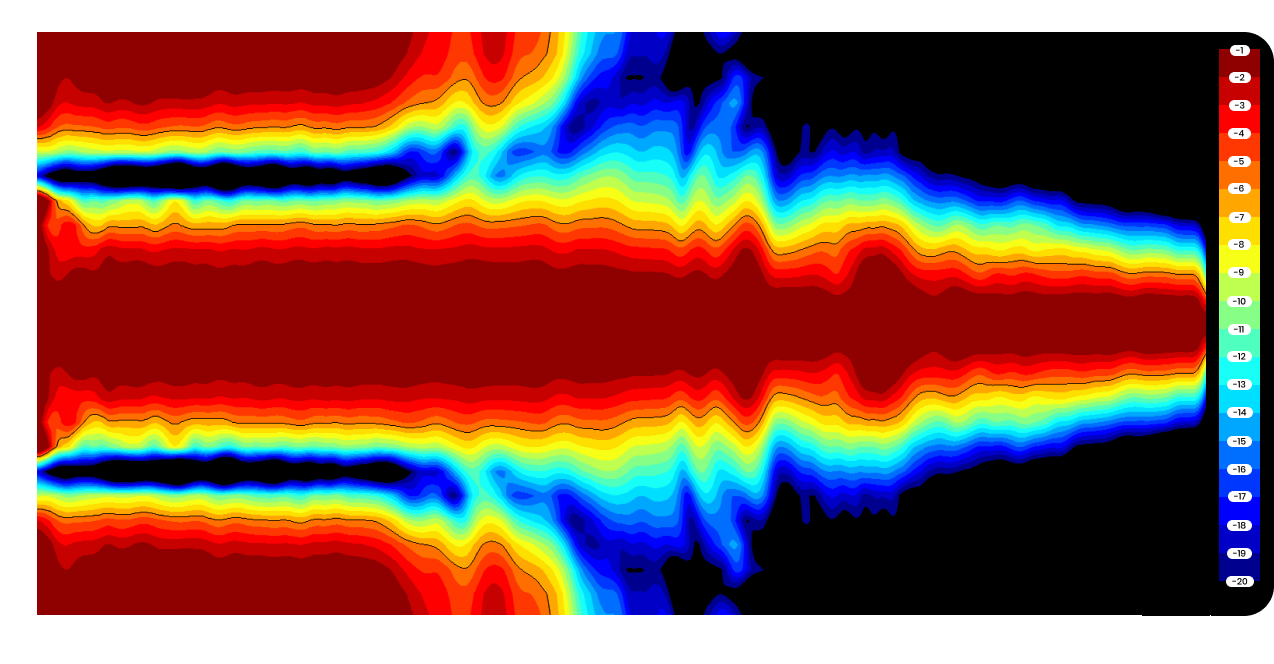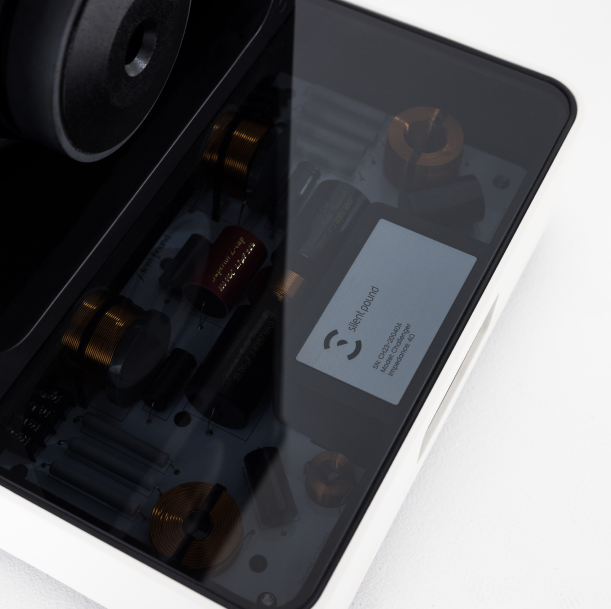3 times
less
Directional Acoustics: A Novel Approach
The cost of quality acoustic treatment for a room often surpasses that of high-end speakers themselves. Consequently, a more efficient approach lies in enhancing sound quality by directing sound waves towards the listener. This method minimizes wave radiation to reflective surfaces, thus reducing the interaction between the speakers and the room.
Our primary objective was to optimize sound diffusion in rooms without acoustic treatment. To this end, we harnessed the power of modern Computer-Aided Design (CAD) and advanced mathematical modeling techniques.
Through rigorous mathematical analysis, a series of detailed experiments, and critical subjective listening sessions, our team has crafted an acoustic system that adapts seamlessly to a variety of room dimensions. This system not only maintains an impeccable tonal balance and high resolution but also brings forth an extraordinary soundstage with unparalleled detail.
Triple Reduction in Room Resonances, No Additional Room Treatment


Controlling directivity, particularly in the low-frequency range, presents a significant technical challenge. Traditional methods to address this, such as low-frequency horns or speaker arrays, are not only costly but also demand considerable technical expertise for installation.
Our engineers addressed this issue by integrating a gradient-type low-frequency (LF) module into our system, yielding remarkable results. We achieved a threefold reduction in acoustic power radiation to the room (with a directional index of approximately 4.8 dB), in stark contrast to traditional closed enclosure speakers that emit low-frequency sound in all directions. This specific LF approach significantly reduces room resonance, especially in the lowest frequencies, without necessitating any extra room treatment. The resulting sound quality is not just purer but also more immersive, transforming any space into an optimal listening environment.
The application of mathematical modeling, particularly the finite element method, has been instrumental in refining our design. It enabled us to optimize the baffle construction, select the ideal crossover frequency, and substantially enhance the reproduction quality of low-frequency sounds.
Patent-Pending Midrange Enclosure

The mid-frequency range is pivotal in crafting an authentic soundstage, which is why we’ve dedicated considerable effort to the design of the mid- and high-frequency components of our system. Addressing the mid-range frequency (MF) correction, particularly in its lower spectrum, led us to develop a unique acoustic enclosure. This innovation strikes an optimal acoustic balance between the mid-frequency and low-frequency ranges, enhancing the overall sound quality.
Our detailed experiments and precise calculations have culminated in a significantly more nuanced and detailed soundstage compared to traditional systems. The mid- and high-frequency (MF-HF) range is reproduced through our mathematically modeled, compact horn, an original design meticulously tuned to harmonize with the MF range. This horn not only meets the highest technical standards but also produces a natural sound quality, free from the distortions often associated with poorly designed horns.
